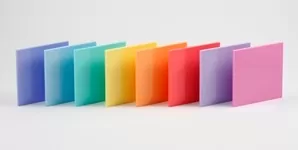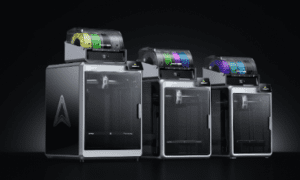Understanding Acrylic Sheets
Acrylic sheet, commonly known as PMMA, is a transparent thermoplastic material that is polymethyl methacrylate. This synthetic polymer forms a rigid material that is glass-like in nature, providing optical clarity and better impact resistance in comparison to traditional glass. Acrylic sheets are manufactured using two principal methods: casting and extrusion, each yielding materials possessing different attributes.
For more in-depth information, you should view the Acrylic Sheet Manufacturer – Turbo.
Because of the material’s chemical composition, these sheets are inherently resistant to UV light, making it suitable for both outdoor and indoor applications. Acrylic sheets also retain transparency and structural integrity over a wide range of temperatures from -40°F to 180°F.
View Top Acrylic Sheet Manufacturers and Suppliers in China – Turbo details to get into the details.
Categories of Acrylic Sheets: Cast and Extruded
To create cast acrylic sheets, liquid acrylic is poured in between two glass plates and allowed to cure. This manufacturing process yields materials with unmatched optical clarity, greater chemical resistance, and improved machinability. Cast acrylic is easily cut, drilled, and thermoformed with minimal risk of stress cracking. This material also polymerizes with solvent bonding easily, facilitating fabrication work.
Extruded acrylic sheets undergo manufacturing processes in which heated acrylic is pushed through rollers to create continuous sheets. This leads to more economical material production with good optical properties and uniform thickness. Compared to cast acrylic, extruded acrylic exhibits more impact resistance. However, it is more susceptible to stress cracking during the fabrication process.
Key Properties of Acrylic Sheets
Acrylic sheets boast several distinguishing characteristics that add value in multiple applications:
The optical clarity reaches up to 92% light transmission, which is better than most types of glass. This remarkable transparency makes the sheets particularly advantageous in applications where visibility is critical.
Impact resistance is about 10 to 17 times stronger than glass, which greatly minimizes the risk of breakage during handling and installation.
Acrylic materials are lightweight as they are approximately half the weight of glass of the same thickness, thereby facilitating easier transport and installation.
Acrylic sheets possess remarkable chemical resistance, which protects against many common solvents, acids, and alkalis, although stress cracking or crazing may occur due to certain solvents.
The thermal properties include a low melting point which allows for thermoforming, as well as stable dimensional construction during normal operating conditions.
Applications of Acrylic Sheets
Uses in Industrial and Commercial Settings
The properties of transparency, durability, and chemical resistance make acrylic sheets useful in industrial applications. In manufacturing facilities, they are used in machine guards, observation windows, and protective barriers that need to be visually monitored.
In commercial architecture, acrylic sheets are employed in skylights, curtain walls, and interior partitions. Their lightweight nature alleviates structural and load weight concerns while providing aesthetic benefits akin to glass. Retail acrylic applications include display cases, protective barriers, and point-of-purchase displays.
The transportation industry incorporates acrylic sheets in aircraft windows, bus shelters, and marine windows where impact resistance and weight reduction are critical.
Creative DIY Projects Using Clear Acrylic Sheets
Home improvement enthusiasts can undertake various creative projects using acrylic sheets. Clear acrylic backsplashes in kitchens make for easy maintenance while providing a modern aesthetic and moisture protection.
In furnishings, these materials can be used for coffee table tops, floating shelves, and decorative room dividers. Their workability makes them easy to custom cut and finish to specific design needs.
Acrylic sheets’ UV and thermal resistance make them well-suited in greenhouse construction, providing optimum growing conditions while withstanding harsh weather.
Acrylic sheets are a lightweight, damage-resistant alternative to glass in picture framing, thereby lowering shipping expenses and the risk of breakage while exhibiting artwork with excellent clarity.
Acrylic Sheets in Signage and Displays
Acrylic sheets are used in sign-making for both illuminated and non-illuminated signs. The ability of the material to edge-light makes it possible to uniformly illuminate sign systems with LEDs, and it does not compromise on the graphics reproduction.
Acrylic sheets are lightweight and look professional, which makes them ideal for portable exhibit components in trade show displays. The material is readily shapeable and can be intricately cut and joined using different techniques.
Acrylic sheets enhance retail displays because they are scratch resistant and optically clear, which offers long-lasting visual merchandising solutions and acrylic sheets enhance retail displays because they are scratch resistant and optically clear.
Benefits of Using Acrylic Sheets
Durability and Impact Resistance
Acrylic sheets exhibit extremely long lifespans in outdoor settings due to their clarity and the acrylic frame’s structural integrity preservation for decades, given proper installation and maintenance. They endure extreme forces without failing catastrophically, cracking instead of shattering due to the material’s impact resistance.
Weather resistance encompasses protection against ultraviolet radiation, temperature cycling, and moisture exposure. Unlike some other plastics, acrylic sheets do not excessively yellow as they age, provided proper UV stabilizers are used.
Compared with Sheeting Glass
Acrylic’s reduced weight compared to glass confers important benefits for structural applications. Buildings can incorporate larger glazed areas without corresponding increases in structural support and with reduced construction costs and complexity.
Labor costs decline due to diminished risks associated with handling heavy glass panels, as simpler and safer installation procedures become possible.
Acrylic sheets withstand prolonged exposure to UV radiation, maintaining their optical and mechanical properties. Their inherent UV resistance protects against degradation due to weathering that afflicts other plastic materials, ensuring durability for outdoor applications.
Acrylic sheets and UV resistant weathering the materials to mechanical exposure undergo in comparison with other plastics for long-term performance undergo in comparison with other acrylic sheets.
Comparing Acrylic Sheets to Other Materials
Acrylic vs. Polycarbonate: Which is Better?
Unlike polycarbonate sheets, acrylic sheets are more optically clear and are more scratch-resistant. The material also offers better chemical resistance, allowing it to withstand cleaning solvents and environmental contaminants more effectively.
However, polycarbonate sheets are better suited for applications that need to withstand harsh impacts and extreme temperatures. On the downside, they are more susceptible to scratching and may undergo discoloration over time from UV exposure.
For most applications, the budget favors acrylic sheets since they are more cost-effective, and less protective coating is needed to keep their appearance well-maintained.
Acrylic vs. Glass: Pros and Cons
Compared to glass, acrylic sheets have a clear safety advantage due to their impact resistance and the way they fail. If acrylic breaks, it fractures in a way that is less likely to produce dangerous, sharp pieces.
On the other hand, glass maintains better scratch resistance and can be cleaned more aggressively without damage. The weight and fragility of glass make it easier to handle and install, avoiding the concerns that come with acrylic sheets.
Acrylic sheets have to be installed with larger expansion joints to permit movement, in contrast to glass, which requires different installation techniques because of the expansion.
Plexiglass vs. Standard Sheets Of Plastic
Plexiglass, or cast acrylic sheets, has distinct advantages over most plastic sheet materials. It shows greater optical clarity and surface hardness than polyethylene or PVC sheets.
While standard plastic sheets may have some advantages over acrylic, such as chemical resistance and temperature tolerances, they simply cannot provide the same clarity, workability, or long-term appearance as acrylic.
Maintenance and Care for Acrylic Sheets
Cleaning Techniques for Clear Acrylic
To maintain the appearance of acrylic sheets and prolong their service life, proper cleaning is essential. When cleaning these surfaces, only soft cloths or sponges should be used, alongside mild soaps; sharper abrasives should always be avoided.
Acrylics can serve optimally if the commercial cleaners made specially for them are used. These cleaners remove static charge, provide temporary scratch resistance, and also help mitigate dust accumulation that otherwise obscures optical clarity.
High temperatures can prove detrimental in cleaning acrylics. The water should be kept below 140°F (60°C) as higher temperatures can thermally stress the material and lead to crazing or cracks, all of which are damaging.
Preventing Scratches and Damage
Preventing surface scratches and damage is only possible with careful handling during use and installation. Protective films should not be removed until the installation is complete, and only non-marring tools should be used to prevent damage to the surface.
For storage, sheets should be separated and kept with protective covers. Contact with sharp or rough surfaces should be avoided.
It is also important that handling techniques evenly distribute loads across the sheet in order to prevent stress concentration cracking.
Long-term Care Strategies for Acrylic Plastic
Regular inspections are essential in determining if there are problems that require attention prior to destabilizing the system. Look for material stress indicators and signs like crazing, discoloration, or edge damage, which suggest improper installation.
Monitoring and controlling chemical exposure with environmental factors like extreme temperatures or mechanical stress is essential in order to mitigate premature failure.
The anticipated service life of acrylic sheets in specific uses, along with environmental factors and maintenance practices, is around 10-30 years. Thus, replacement planning must take this estimate into consideration.
Wholesale and Custom Options for Acrylic Sheets
Where to Buy Acrylic Sheets in Bulk
The best pricing for acrylic sheet purchases is usually offered by industrial suppliers who stock the sheets in volume. These suppliers often keep a full inventory of standard sizes and thicknesses for immediate shipment.
Moderate volume suppliers are serviced by regional distributors, which results in lower shipping costs. These distributors also provide cut-to-size services and other technical support for specific applications.
Shipping costs for oversized sheets are usually a large expenses, particularly for standard dimensions and specifications. Online suppliers, in comparison, are bulk purchasing suppliers for standard sizes and specifications.
Cut-to-Size Acrylic Sheets: Options and Considerations
Acrylic sheets set specific dimensions for particular applications, and thus, provide custom-cutting services. These sheets are generally cut using saw or laser cutting methods, which provide the sheets with clean edges. Laser cutting is much more expensive than saw cutting, but is necessary for intricate designs.
Optical applications require polished edges, which are decorative flame-polished edges. The end use of the product determines the aesthetic and application requirements and thus, the finishing options.
Communication of tolerances is critical for the desired fit and function, but standard tolerances for most applications are set at ±0.005” for high precision tasks, and up to ±1/16” for general work.
Understanding Pricing for Acrylic Sheet Sizes (24 x, 36 x, 48 x)
Industry practices dictate standard sheet sizes which include 24” x 48”, 36” x 48”, and 48” x 96” as readily available stock. These dimensions offer optimal value for a wide range of uses and are cost-effective.
Increased sheet thickness impacts pricing significantly. Thicker sheets are priced higher due to increased material content as well as longer manufacturing times.
Custom dimensions are often more expensive than standard sizes due to additional labor involved in special cutting and handling. However, these costs might be warranted in cases where reduced waste and better fitting offset the custom pricing.
Making the Right Choice for Your Acrylic Sheet Needs
Acrylic sheets are ideal for applications needing transparency and ease of fabrication due to their strength and flexibility. Their optical clarity and impact resistance make them useful for many applications, including architectural glazing and even for creative do-it-yourself (DIY) undertakings.
All these considerations focus on performance and cost, as well as fabrication capabilities. For more demanding applications, cast acrylic is more expensive but offers greater ease of machining and optical performance. For general-purpose applications, extruded acrylic is more cost-effective.
Within the parameters of proper maintenance and handling, performance and service life is maximized. Performance of the materials is directly related to how well the users follow the guidelines pertaining to cleaning, storage, and fabrication.



































